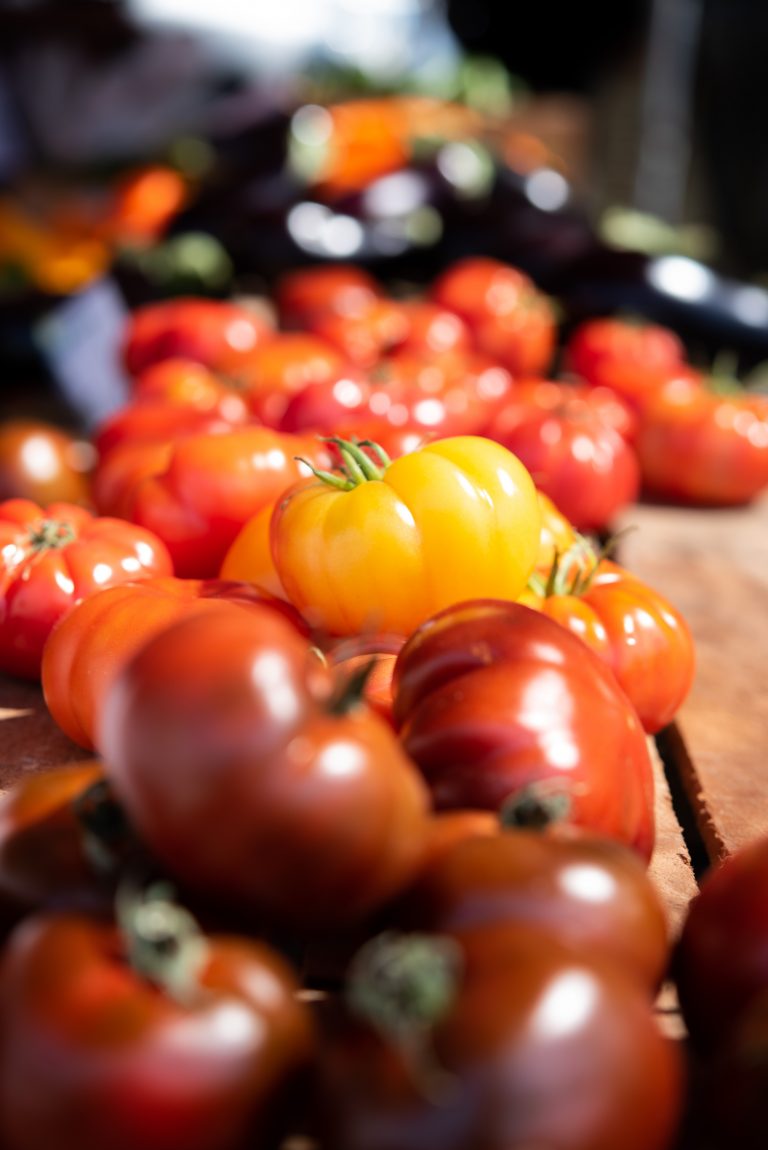WHAT’S SO GREAT ABOUT LOCAL?
by managing partner, bret csencsitz
MORE THAN JUST A BUSTLING MARKETPLACE
Just a few blocks from Gotham’s doors is the busiest farmer’s market in the United States: the Union Square Greenmarket. With 300,000 daily visitors and over a hundred different farms and purveyors, it represents a bustling, dynamic marketplace that has become much more than just shopping.
Over the past four decades New Yorkers have benefitted greatly from having access to the dozens of Greenmarkets peppered around the five boroughs. We’ve come to understand that eating local is better for the body, better for the body politic, and ultimately better for the long-term preservation of our country’s fragile farmland.
INNOVATION AND INSPIRATION
Gotham has long been a champion of this market — for produce yes, but also for inspiration. Stroll through on a Saturday morning and you’ll find the stands packed with bright colors and curious new varieties that continue to push our kitchen to create in bold new ways.
Earlier this month we worked closely with three of the farms (Eckerton Hill, Berried Treasures, and Paffenroth) to pull together a Late Summer Harvest Tasting Menu. Those lucky enough to have snagged a spot at one of the dinners were treated to six extraordinary courses featuring the best this season has to offer: tomatoes, sweet corn, blueberries, plums, peaches, and more. By all accounts, the dinners were a huge success… and not just because the food was delicious (though it certainly was). No, this time around we measured our success a bit differently. For us, it was all about collaboration and awareness.
In that spirit, we want to share a little more background on the subject, so you can better understand the passion we have for the Greenmarket Program and the organization responsible for its success, GrowNYC.
THE WAY THINGS WERE
50 years ago the availability of fresh produce in New York was remarkably scarce. The rule of thumb for food was bigger meant more, and cheaper was better. Bigger farms with mono-crops, fertilizers, pesticides = cheaper food = less hunger. And while the objective of reducing hunger in America was an admirable one, hindsight has shown that the results were somewhat less than desirable.
In its infancy, the Union Square Greenmarket was a collection of just 10 farmstands that sprouted up on Saturday mornings to serve a small community. Now, four decades later, visitors will find over 100 different farms, many of which did not exist even 20 years ago. In fact, they could not afford to exist. The Greenmarket Program was the linchpin that provided smaller farms with the market necessary for them to thrive.
Yet in 2017 farmer’s market sales represented less than 1% of all food sales in America. Put another way… the other 99% of all food sales in this country were all done through distribution channels and middlemen.
AND WHAT EXACTLY DOES THAT MEAN?
That means the best, freshest, most nutritious produce is not readily accessible because of how our grocery stores and institutions are organized. Still today, as it was half a century ago, buying is centralized and food runs only through specific channels like wholesale companies, and/or companies that add value by washing, cutting, and repackaging (think baby carrots).
The path from farm to market is a winding one, and costs are added at each step of the way. Pricing, time, and transportation have a way of degrading the product for consumers along the way. The results, of course, are obvious. Number One, the consumer waiting at the end of the line pays more for food that has degraded in flavor and nutrition, and Number Two, small to mid-sized farmers see only a fraction of the revenue.
SOME SOLUTIONS
By all estimation, the Greenmarket Program is thriving here in New York City. Consumers now have access to more than 50 different markets that bring in produce from Long Island, Hudson Valley, New Jersey, Pennsylvania, and Connecticut. But the rest of the country has been slow to follow, and so there’s a real push to help spread awareness beyond the five boroughs.
If retailers bought directly from local farms, or farmer’s markets were more convenient for the average American citizen, these smaller farms with diversified crops would survive. But on its own, farmer’s markets aren’t enough. Which is why we’re seeing a movement right now to create Food Hubs (like the one GrowNYC spearheaded and Governor Cuomo announced last year for Hunts Point) to help expand the reach for many of these small to mid-sized farms. Think of it as distribution with heart, a way to responsibly serve both the farmer and the consumer.
DID YOU KNOW?
The USDA recently published an exhaustive list of Food Hubs in all 50 states. CLICK HERE to find one near you!
What’s So Great About Local?
September 25, 2018



